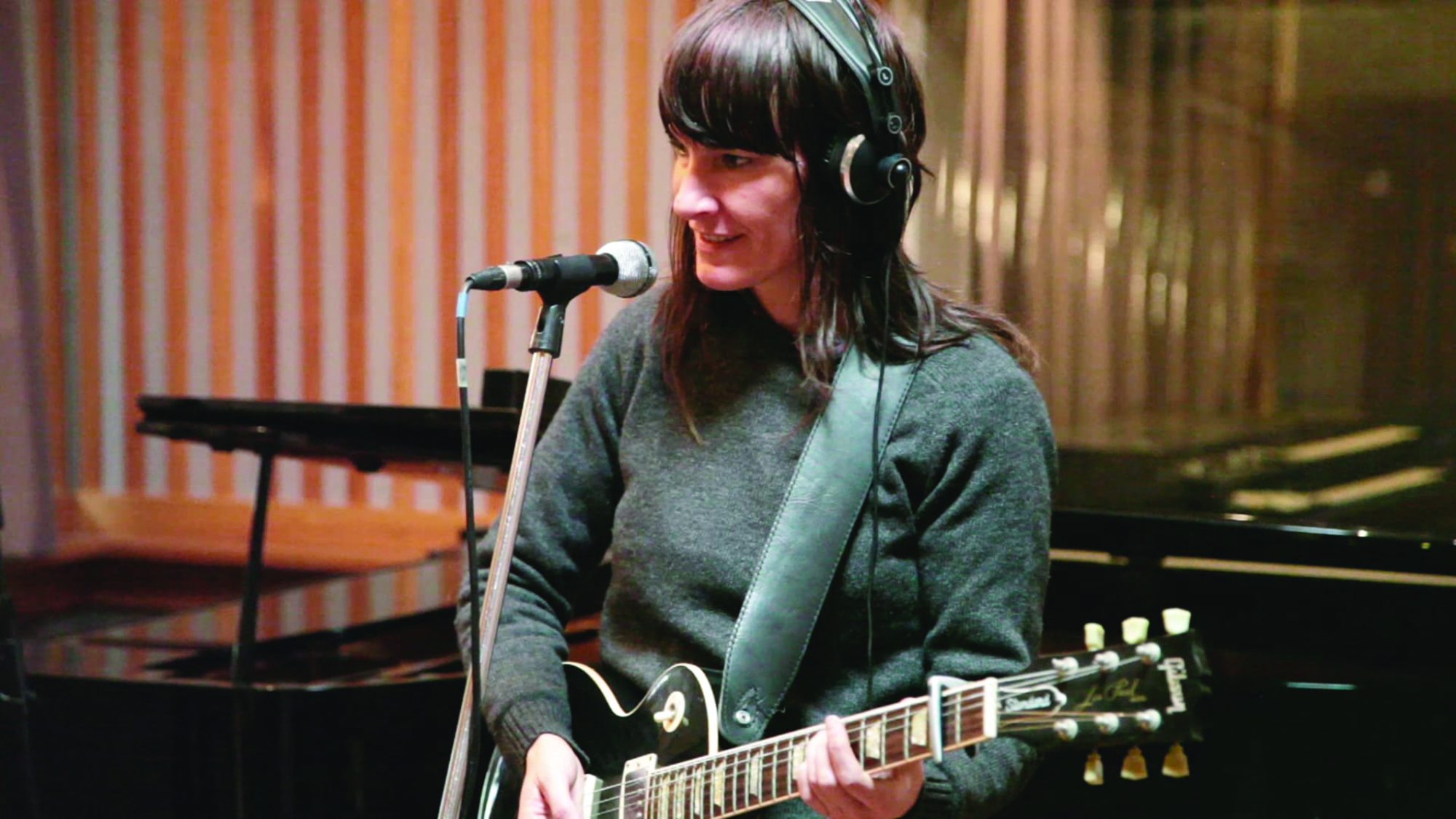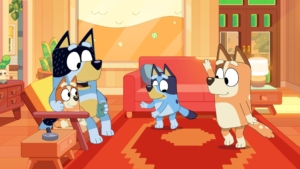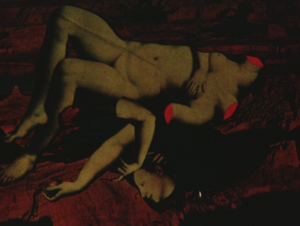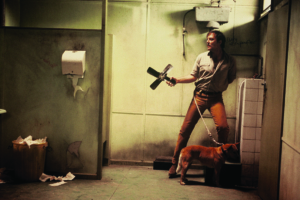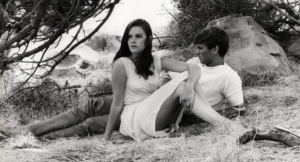Three minutes into Now Sound: Melbourne’s Listening (Tobias Willis, 2018), I saw myself on screen. I didn’t know it was coming, but there I was: in a crowd cutaway at the Northcote Social Club, watching electro conceptualist Sui Zhen perform. I expected the documentary to be full of people I knew – friends; foes; fellow broadcasters on Melbourne’s iconic community-radio station 3RRR, where I’ve presented a program, The International Pop Underground, for (oh god) two decades. And, indeed, it was. But I didn’t know that, for the first time ever as a critic, I’d see myself in a movie, and have to critically parse what that meant.
My unofficial, ephemeral on-screen presence inevitably changed what this resulting essay is – something evident from all the ‘I’s I’ve already used. Having never wanted to participate in contemporary publishing’s first-person industrial complex,[1]See Laura Bennett, ‘The First-person Industrial Complex’, Slate, 14 September 2015, <http://www.slate.com/articles/life/technology/2015/09/the_first_person_industrial_complex_how_the_harrowing_personal_essay_took.html>, accessed 31 May 2019. I originally conceived of this piece as one critically examining Now Sound: Melbourne’s Listening and another documentary chronicling the local music community, Her Sound, Her Story (Claudia Sangiorgi Dalimore, 2018); the idea certainly didn’t involve bringing me, as writer, into the analysis. But coming face-to-face with myself was some kind of La Jetée (Chris Marker, 1962) moment, instantly altering the narrative that existed beforehand.
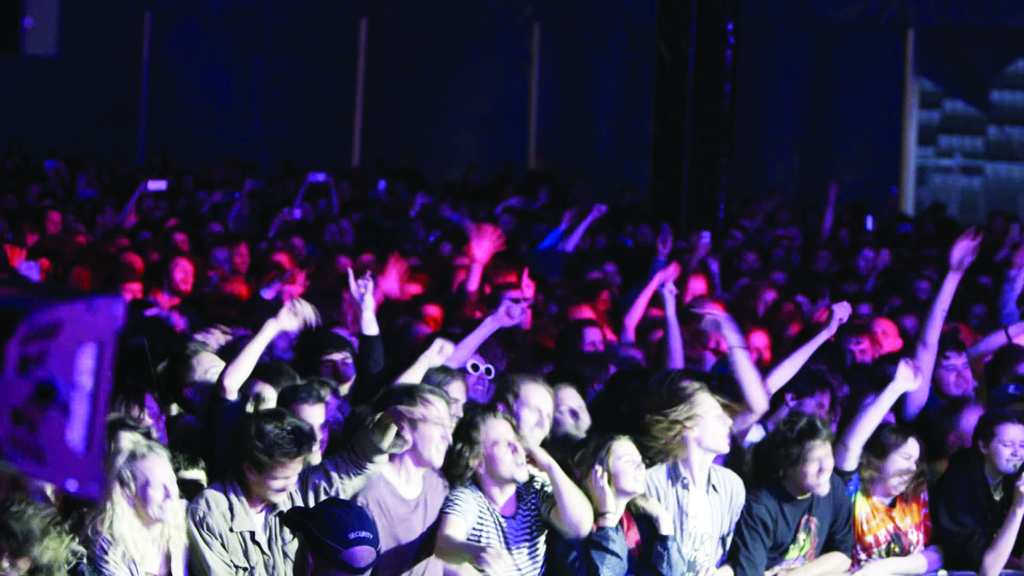
My presence suggested both my own proximity to the world being depicted and a greater theme both documentaries are grappling with: critical objectivity. True critical objectivity is a myth; personal experience, prejudice, taste and knowledge colour any opinion, reaction or reading of an artwork (iconic film critic Pauline Kael called it ‘saphead objectivity’, seeing attempts to depersonalise writing as the scourge of passionate reaction and lively discussion[2]Pauline Kael, quoted in Hal Espen, ‘Kael Talks’, The New Yorker, 21 March 1994, p. 134. ). Beyond objectivity, or the lack thereof, writing about films and writing about music – which I’ve also done for (oh god) two decades – feel distinctly different. While there’s a long, respected history of cinema criticism, music criticism is often maligned; there’s that tired old quote, variously attributed to Frank Zappa or Elvis Costello (and beyond), that ‘writing about music is like dancing about architecture’.[3]See ‘Writing About Music Is like Dancing About Architecture’, Quote Investigator, <https://quoteinvestigator.com/2010/11/08/writing-about-music/>, accessed 31 May 2019. The role of a music critic is rarely to parse some million-dollar mass-entertainment product for its time-killing validity (as opposed to contemporary film criticism and reviewing, which feel like being a stringer on the superhero-movie beat); instead, you’re expected to flag overlooked, underheard, deep-in-the-underground gems. Often, music critics – and/or radio presenters! – are feted as ‘tastemakers’, a label that puts forward the idea that one’s musical preferences and record collection are barometers of iconoclastic, individual taste. Music writer Carl Wilson’s veritable dissertation Let’s Talk About Love, itself a study in the myth of critical objectivity, tackles this head-on: in a collection of books (the 331⁄3 series) ostensibly devoted to ‘classic’, always credible albums, he instead unpacks Céline Dion’s 1997 album of the same name, which is both critically reviled and one of the biggest-selling albums of all time. A 2014 reissue of the 2007 book expanded on the idea, even supplanting its original subtitle, A Journey to the End of Taste, with an ironic one: Why Other People Have Such Bad Taste.[4] Carl Wilson, Let’s Talk About Love: Why Other People Have Such Bad Taste, Bloomsbury, New York & London, 2014 [2007].
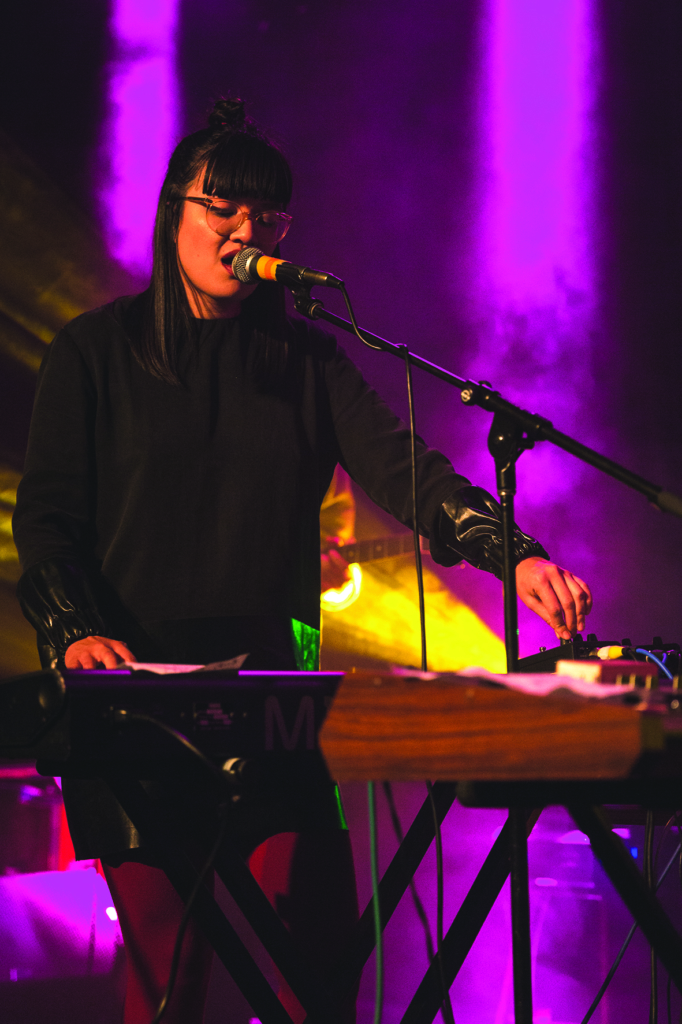
Possessing ‘good’ taste has led me to a long-simmering loathing of music documentaries. A perennially popular staple of film-festival programs and streaming-service menus, the ‘rockumentary’ is almost always an artless, inherently uncinematic affair. It marshals the most tired tropes of nonfiction storytelling – banal direction, stock-footage B roll, static talking heads, illustrative imagery, the same scant handful of archival images – in service of what’s, usually, sheer nostalgia: an airless oration of how great the past was, told from the comfort and safety of the present. As some cod rock historian – usually Henry Rollins, Thurston Moore or Bono – offers endless variations on the pontification ‘before [artist X], no-one was doing anything like this!’, we’re treated to narratives that seek not to challenge or provoke, but to package underappreciated musicians in easily consumable formats, past rebellion willingly submitted to contemporaneous commodification. In his wry essay collection Censorship Now!! (in which he dismisses documentaries as ‘bad-looking, unnuanced, propagandistic tellings of events’ that play ‘like audio-visual presentations in a grade school’), critic Ian F Svenonius-otherwise known as the electric frontman of bands like Nation of Ulysses, The Make-Up, Weird War and Chain & The Gang – mocks rockumentaries as ‘dull veneration’, ‘desperate advertisements’ out not simply to burnish legacy, but to sell old products to a new audience.[5]Ian F Svenonius, Censorship Now!!, Akashic Books, New York, 2015, pp. 114, 79.
There are examples of filmmakers deliberately distancing themselves from this established model, like Kiwi oddball Florian Habicht, who turned Pulp: A Film About Life, Death & Supermarkets (2014) into a work of absurdism, in part because he felt, rightly, that ‘[m]ost documentaries about bands are really boring […] They feel less like artworks than promotional videos.’[6]Florian Habicht, quoted in Anthony Carew (woot!), ‘Common People’, The Music, 31 July 2014, <https://themusic.com.au/article/bJF_fmFgY2I/florian-habicht-anthony-carew>, accessed 1 June 2019. Even iconic filmmakers fall victim to that promotional tendency: Martin Scorsese’s Rolling Stones documentary, Shine a Light (2008), is an utterly uncritical concert movie in thrall to its subjects’ celebrity. Closer to home, local Scorsese acolyte Kriv Stenders may maintain a critical cynicism when depicting hypochondriacs or hitmen in fiction features, but when it comes to making a documentary about The Go-Betweens (2017’s The Go-Betweens: Right Here), he just turns into a stan.
A perennially popular staple of film-festival programs and streaming-service menus, the ‘rockumentary’ is almost always an artless, inherently un-cinematic affair. It marshals the most tired tropes of nonfiction storytelling … in service of what’s, usually, sheer nostalgia.
All of this speaks to how humans – be they active participants, observant chroniclers, underpaid critics or mere members of the audience – relate to music so intimately, and to how music, in turn, is fostered and birthed in a far different fashion to film. Music criticism is often viewed as ‘support’, a quality that music scenes are, themselves, built on. They are communal entities, functioning via a network of personal relationships; one of the reasons that ‘cancel culture’[7]See Shamira Ibrahim, ‘In Defense of Cancel Culture’, VICE, 5 April 2019, <https://www.vice.com/en_us/article/vbw9pa/what-is-cancel-culture-twitter-extremely-online>, accessed 31 May 2019. is so potent in the independent-music world – take, say, a band like the queer-friendly punk duo PWR BTTM, whose career vanished overnight, in 2017, after accusations of sexual misconduct came out[8]See Randall Roberts, ‘Queer Punk Band PWR BTTM Forced to Cancel Tour Dates amid Sexual Abuse Allegations’, Los Angeles Times, 15 May 2017, <https://www.latimes.com/entertainment/music/la-et-ms-pwr-bttm-cancel-tour-20170515-htmlstory.html>, accessed 31 May 2019. – is that so much of an underground music scene’s workings revolve around goodwill, personal affinity, an air of (possibly tenuous) friendship. In the absence of money, these scenes instead foster camaraderie, amplified by the inherently social settings of performances, which take place in hyper-festive spaces like dive bars, house parties and music festivals.
But what does that sense of supportiveness and community mean when employed in documentary filmmaking? Critical objectivity isn’t just a standard applied to critics, but to documentarians – who, even when spending years entwined with their subjects, are supposed to somehow keep a critical distance from them. Both Now Sound: Melbourne’s Listening and Her Sound, Her Story grew out of music scenes, and existing relationships forged therein. Willis, the director of the former, has worked with Laneway Festival, Client Liaison, Kirin J Callinan, Courtney Barnett, Kllo and Sui Zhen; and his producer, Marcus Rimondini, has had a long career as a music journalist.[9]KEWL Studios, Now Sound: Melbourne’s Listening press kit, 2018, p. 9. Sangiorgi Dalimore, the director of the latter, has made music videos for 360, Thelma Plum, Odette, Kaiit and Mojo Juju; and her producer, Michelle Grace Hunder, is a music photographer who initially conceived of Her Sound, Her Story as a photographic work (inspired by having seen the stark gender disparity at play in her hip-hop passion project RISE).[10]Her Sound, Her Story, Her Sound, Her Story press kit, 2018, p. 6. At the beginning, Hunder recounts, she initially enlisted ‘people [she] had already worked with, or Claudia had already worked with’. But, by the end of the project, having spent so much time together – some subjects even staying at Sangiorgi Dalimore’s house – the filmmakers realised they ‘had built a community’ as much as chronicled one.[11]Michelle Grace Hunder, phone interview with author, 6 May 2019.
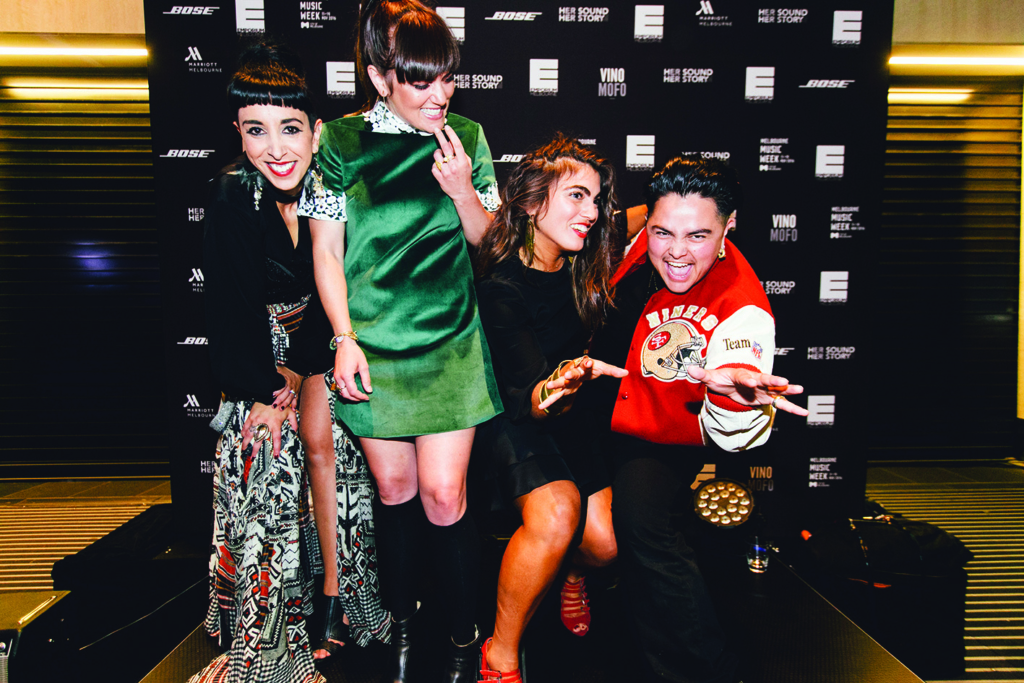
That sense of warmth permeates Her Sound, Her Story. While the talking-head sound bites therein touch on institutionalised prejudice, sexual assault and the patriarchal tenor of music-biz politics, the film isn’t an indictment of a macho culture but a celebration of those defying it. While Sangiorgi Dalimore describes the industry’s slow social progress as ‘one step forward, two steps back’,[12]Claudia Sangiorgi Dalimore, phone interview with author, 6 May 2019. and has spoken of the contemporary climate as ‘a bold and frightening time to be alive’,[13]Claudia Sangiorgi Dalimore, ‘Director’s Statement’, in Her Sound, Her Story, op. cit., p. 5. her doc is a work of positivity floated into a climate of negativity. ‘We were really like, “We’re not going to make an angry film, because that’s not going to do anything for anybody’,’ Sangiorgi Dalimore says. ‘I think there’s a reason why things are changing, and it’s mostly to do with how the messages are being delivered.’[14]Sangiorgi Dalimore, phone interview with author, op. cit. In Her Sound, Her Story, there is anger, especially in conversational quotes from local music-industry elders like Deborah Conway, Tina Arena and Kate Ceberano who suffered through the grotesque machismo of the bad old days. But, rather than dwell on these horror stories – or speak to musicians associated with the organisation LISTEN, a feminist advocacy group for ‘marginalised folk in Australian music’,[15]‘About’, LISTEN official website, <https://www.listenlistenlisten.org/about/>, accessed 1 June 2019. which is conspicuously absent here – the filmmakers eventually enact the words of one of their interview subjects, Mama Kin: to ‘gently, subversively challenge the status quo’.
Rather than address the music industry on a granular level, this subject is, to the filmmakers, something secondary to participating in ‘a much broader conversation’ about gender politics (‘it could be about any industry,’ Sangiorgi Dalimore says).[16]Sangiorgi Dalimore, phone interview with author, op. cit. Her Sound, Her Story eventually leaves off with a final reel familiar to viewers of a nonfiction subgenre we can call ‘world-is-fucked movies’: docs addressing some kind of injustice (here: gender disparity in music) and turning towards an overly optimistic conclusion that serves as a hopeful spur for participation, activism, change. ‘The answer,’ Hunder states, ‘is women coming together, working with each other and not against each other’[17]Hunder, op. cit. (this finale evoking, for me, fellow Metro critic Alexandra Heller-Nicholas’ lament about the ‘heavily idealized ways that women’s communities are reduced to sort of simplistic oases of agreeability and harmony’ in on-screen representations[18]Alexandra Heller-Nicholas, ‘Filmmaker Amanda Kramer Talks Ladyworld’, Alliance of Women Film Journalists, 15 October 2018, <https://awfj.org/blog/2018/10/15/filmmaker-amanda-kramer-talks-ladyworld-alexandra-heller-nicholas-interviews/>, accessed 1 June 2019.).
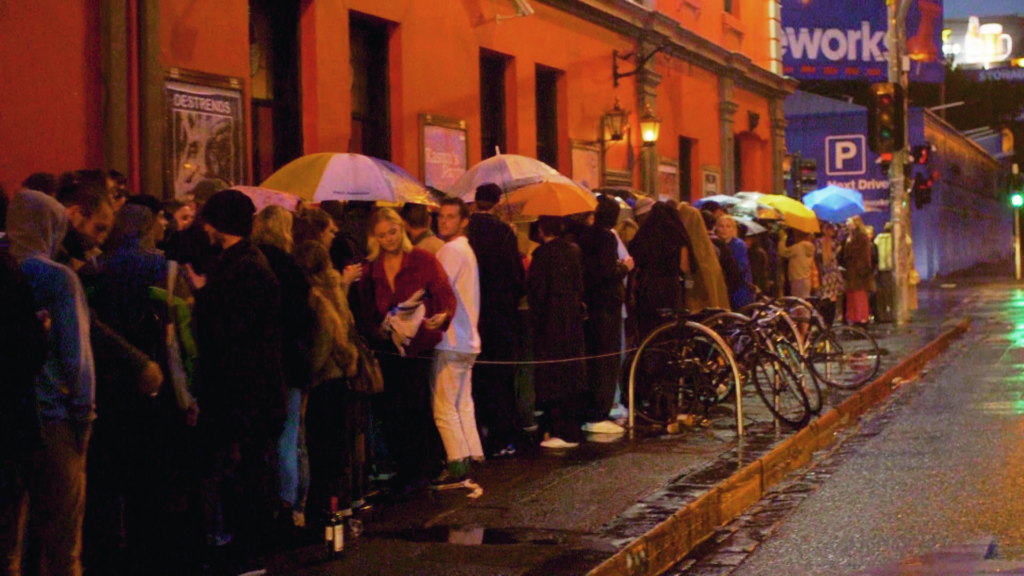
This sentiment, again, speaks to the positive currency of community in music. These documentaries aren’t just chronicles of such communities but products of them: each production going from idea to actuality because of the support and participation they have received, from interview subjects to crowdfunding campaigns. When Sangiorgi Dalimore and Hunder reflect on the common ground of collaboration being fertile soil on which to foster friendships, they do so with sincerity. And, of Now Sound: Melbourne’s Listening, Willis similarly says, ‘It became apparent that we were very much making this film with the community, for the community.’[19]Tobias Willis, phone interview with author, 27 April 2019. The respective filmmakers of both docs tell me that what they cared about most, in terms of reception, was that the people depicted on screen liked what they saw – which can be taken either as a great example of wanting to avoid misrepresentation or as a desire to be liked that may not, ultimately, serve a film well.
Each work is, in turn, billed with genuine positivity, something that echoes the emotional tenor of fandom. The tagline for Her Sound, Her Story is ‘Celebrating women in Australian music’;[20]Her Sound, Her Story, op. cit., p. 2. Now Sound: Melbourne’s Listening is synopsised as ‘a love letter to the music scene and its ever expanding subcultures’.[21]KEWL Studios, op. cit., p. 3. The shoegaze-centred music community of early-1990s London may have been, in its day, mocked as ‘The Scene That Celebrates Itself’,[22]See Andy Ross, ‘Shoegazing – the Coining of a Genre’, HuffPost, 11 May 2016, <https://www.huffingtonpost.co.uk/andy-ross/shoegaze_b_9892330.html>, accessed 1 June 2019. but now such self-celebration is a matter of course. Rather than mere back-patting, celebratory acts can be a bellwether of the health of any scene. Whereas the Australian music of yore suffered from the self-sabotage of cultural cringe and tall poppy syndrome, as Herald Sun critic Mikey Cahill (another figure interviewed in Now Sound) suggests, that old ‘reticence to celebrate success because we may be seen as “up ourselves”’ has fallen away. And, at a time when ‘success’ is far more nebulous than the chart positions and financial windfalls of past generations – ‘artists are barely making any money,’ Cahill says – a documentary can serve as a form of validation.[23]Mikey Cahill, email interview with author, 26 April 2019.
Both Now Sound: Melbourne’s Listening and Her Sound, Her Story grew out of music scenes, and existing relationships forged therein … These documentaries aren’t just chronicles of such communities but products of them.
Now Sound: Melbourne’s Listening both bores down into its titular city’s music scene (a host of statistics, read in narration by 3RRR’s Lauren Taylor over 3D models of neighbourhood geography, feeling like City of Melbourne promotion) and bounces around. There’s conversations about the climate that has birthed such a vibrant scene, naturally, but then there’s talk of gender inequality (‘There’s probably never been a better time, in independent music, to be a woman,’ says Jen Cloher in Willis’ film – though she also appears in Her Sound, Her Story – ‘because, up until now, it’s always been a bit shit’); Melbourne’s growing community of trans musicians (Simona Castricum is featured); and the harsh financial realities of running record labels, staging festivals and keeping venues open. A contrary voice comes from Yorta Yorta rapper DRMNGNOW, whose thoughts rebuke the notions of community so often blithely invoked (‘How does an Indigenous artist find a place for themselves in a musical world that’s not necessarily something they deem as being a community?’); Willis describes this interview as ‘revelatory’, inspiring him to reframe his perceptions of both his film and himself. It was one of many treasured moments the director had while making Now Sound: Melbourne’s Listening, a production filled with cross-collaboration and growing relationships. ‘Maybe that model’s a bit too idyllic for making all types of documentary film, but you need to build a level of trust and friendship when making projects,’ he says. ‘I’ve built my life around the Melbourne music scene. It’s really special to me. A lot of my close friends are connected to music somehow.’[24]Willis, op. cit.
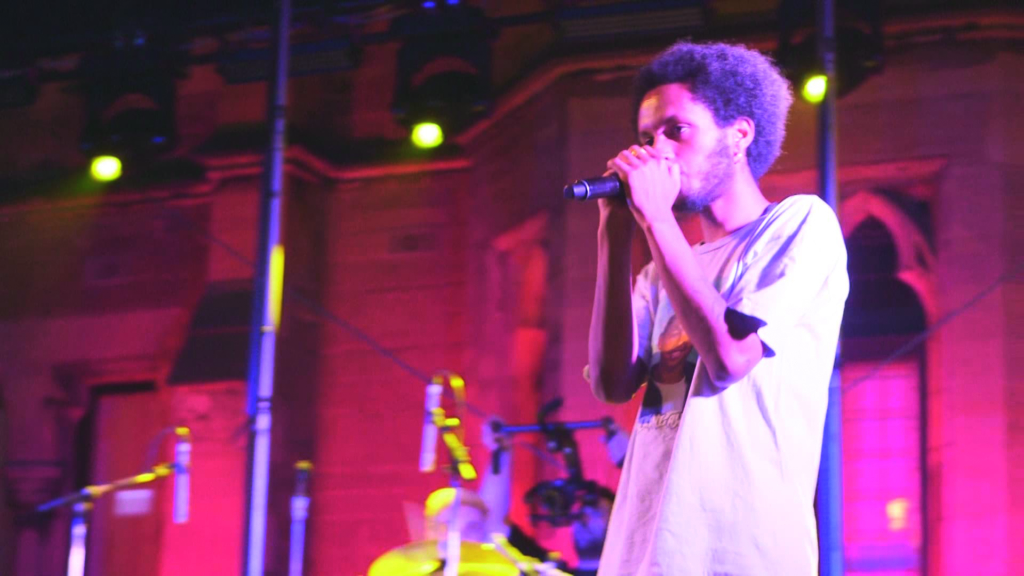
This idea of friends-chronicling-friends places limits on critical objectivity (just as typing about films featuring your friends, and your own self, may cause one to spiral into a strange form of meta-reviewing), but familiarity can also offer insight and intimacy that a more objective study can’t. The regular ‘badness’ of music documentaries comes not from the subjectivity of proximity, but from fandom, and the halo effect of back-in-the-day nostalgia. One way in which both Now Sound: Melbourne’s Listening and Her Sound, Her Story are contrapuntal to the same old rockumentary song is the simple fact that they’re not about something that happened, but something that’s happening. Willis calls his film ‘a snapshot of what it was like from 2016 to 2018 in Melbourne’, even daring to dub this ‘a golden age of Melbourne music’.[25]ibid. In that, it feels like an insta-history: less self-congratulatory and more storytelling for posterity.
What Now Sound: Melbourne’s Listening offers, says interviewee Simon Winkler, 3RRR’s music coordinator, is ‘immense from a cultural and historical perspective, both for people in the scene, outside the scene, and coming to the scene at a later stage seeking understanding’.[26]Simon Winkler, email interview with author, 29 April 2019. Thinking of the documentary’s meaning, Becky Sui Zhen Freeman – who serves as a recurring figure throughout – also projects forward: ‘I feel like it serves a purpose for the future that we can’t be aware of. I think, in twenty years, […] it’ll make us feel more important about the lives we lived.’[27]Becky Sui Zhen Freeman, phone interview with author, 29 April 2019. Certainly, it’s hard for me, given I’m literally on screen watching Sui Zhen perform, to see Now Sound: Melbourne’s Listening and not think about the life I’ve lived.
One way in which both Now Sound: Melbourne’s Listening and Her Sound, Her Story are contrapuntal to the same old rockumentary song is the simple fact that they’re not about something that happened, but something that’s happening.
In 2016, in honour of the station’s fortieth anniversary, the exhibition ON AIR: 40 years of 3RRR was staged at the State Library of Victoria. For someone who’s been ‘on air’ at said station for half my life, seeing random bits of 3RRR memorabilia exhibited was a surreal experience, one akin to walking into a museum and finding objects from your parents’ lounge room displayed as if art. Combining some of that close-to-home strangeness with the loaded baggage of being a rockumentary, Now Sound: Melbourne’s Listening utterly obliterated any notions of critical objectivity I could’ve hoped to possess – something way beyond the close-to-homeness I already felt when, before that, first viewing Her Sound, Her Story. But, then again, whether as filmmaker or as viewer, aren’t our experiences of cinema – rooted in perspective, specificity, moments in time – always subjective?
Endnotes
| 1 | See Laura Bennett, ‘The First-person Industrial Complex’, Slate, 14 September 2015, <http://www.slate.com/articles/life/technology/2015/09/the_first_person_industrial_complex_how_the_harrowing_personal_essay_took.html>, accessed 31 May 2019. |
|---|---|
| 2 | Pauline Kael, quoted in Hal Espen, ‘Kael Talks’, The New Yorker, 21 March 1994, p. 134. |
| 3 | See ‘Writing About Music Is like Dancing About Architecture’, Quote Investigator, <https://quoteinvestigator.com/2010/11/08/writing-about-music/>, accessed 31 May 2019. |
| 4 | Carl Wilson, Let’s Talk About Love: Why Other People Have Such Bad Taste, Bloomsbury, New York & London, 2014 [2007]. |
| 5 | Ian F Svenonius, Censorship Now!!, Akashic Books, New York, 2015, pp. 114, 79. |
| 6 | Florian Habicht, quoted in Anthony Carew (woot!), ‘Common People’, The Music, 31 July 2014, <https://themusic.com.au/article/bJF_fmFgY2I/florian-habicht-anthony-carew>, accessed 1 June 2019. |
| 7 | See Shamira Ibrahim, ‘In Defense of Cancel Culture’, VICE, 5 April 2019, <https://www.vice.com/en_us/article/vbw9pa/what-is-cancel-culture-twitter-extremely-online>, accessed 31 May 2019. |
| 8 | See Randall Roberts, ‘Queer Punk Band PWR BTTM Forced to Cancel Tour Dates amid Sexual Abuse Allegations’, Los Angeles Times, 15 May 2017, <https://www.latimes.com/entertainment/music/la-et-ms-pwr-bttm-cancel-tour-20170515-htmlstory.html>, accessed 31 May 2019. |
| 9 | KEWL Studios, Now Sound: Melbourne’s Listening press kit, 2018, p. 9. |
| 10 | Her Sound, Her Story, Her Sound, Her Story press kit, 2018, p. 6. |
| 11 | Michelle Grace Hunder, phone interview with author, 6 May 2019. |
| 12 | Claudia Sangiorgi Dalimore, phone interview with author, 6 May 2019. |
| 13 | Claudia Sangiorgi Dalimore, ‘Director’s Statement’, in Her Sound, Her Story, op. cit., p. 5. |
| 14 | Sangiorgi Dalimore, phone interview with author, op. cit. |
| 15 | ‘About’, LISTEN official website, <https://www.listenlistenlisten.org/about/>, accessed 1 June 2019. |
| 16 | Sangiorgi Dalimore, phone interview with author, op. cit. |
| 17 | Hunder, op. cit. |
| 18 | Alexandra Heller-Nicholas, ‘Filmmaker Amanda Kramer Talks Ladyworld’, Alliance of Women Film Journalists, 15 October 2018, <https://awfj.org/blog/2018/10/15/filmmaker-amanda-kramer-talks-ladyworld-alexandra-heller-nicholas-interviews/>, accessed 1 June 2019. |
| 19 | Tobias Willis, phone interview with author, 27 April 2019. |
| 20 | Her Sound, Her Story, op. cit., p. 2. |
| 21 | KEWL Studios, op. cit., p. 3. |
| 22 | See Andy Ross, ‘Shoegazing – the Coining of a Genre’, HuffPost, 11 May 2016, <https://www.huffingtonpost.co.uk/andy-ross/shoegaze_b_9892330.html>, accessed 1 June 2019. |
| 23 | Mikey Cahill, email interview with author, 26 April 2019. |
| 24 | Willis, op. cit. |
| 25 | ibid. |
| 26 | Simon Winkler, email interview with author, 29 April 2019. |
| 27 | Becky Sui Zhen Freeman, phone interview with author, 29 April 2019. |
